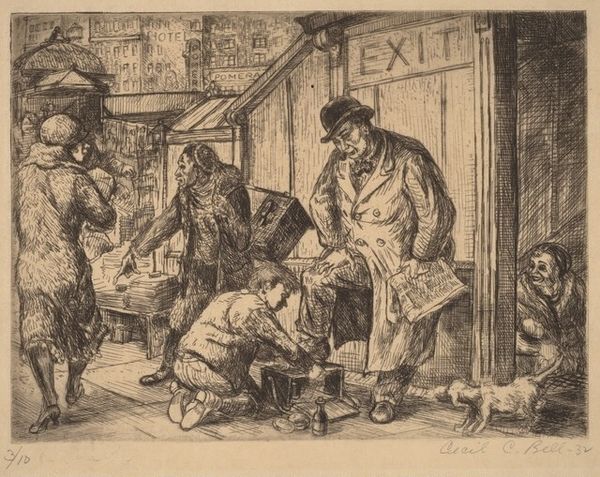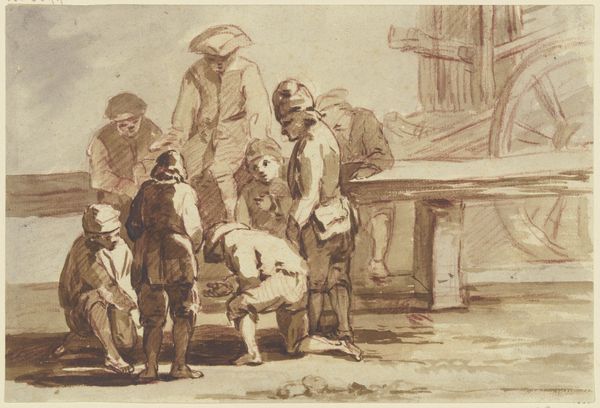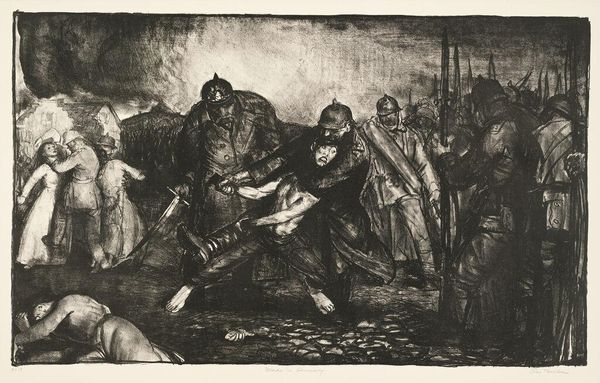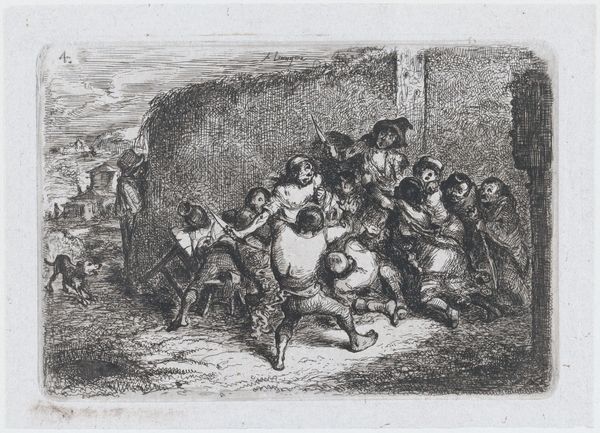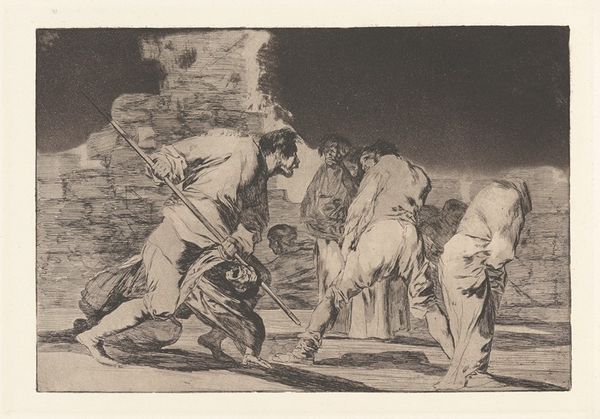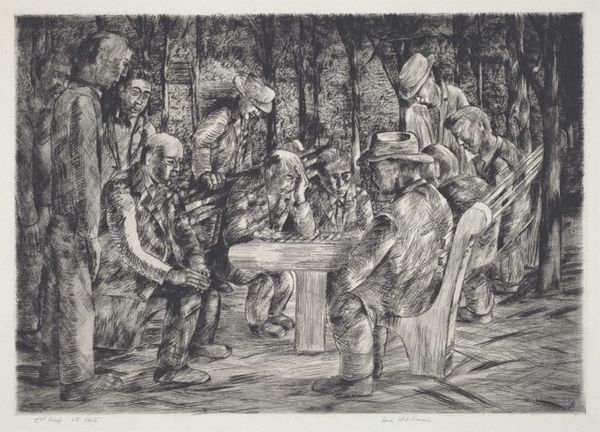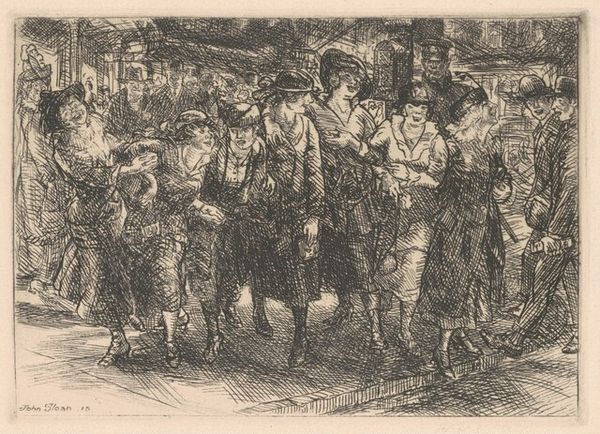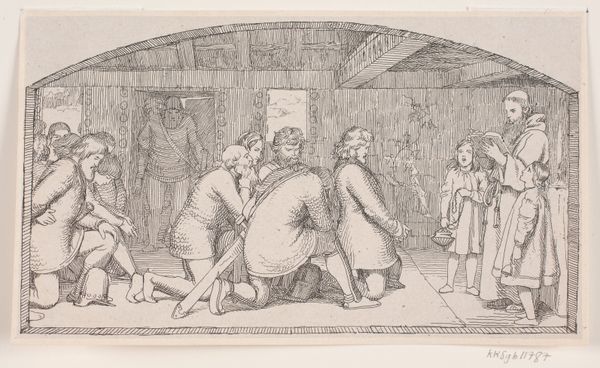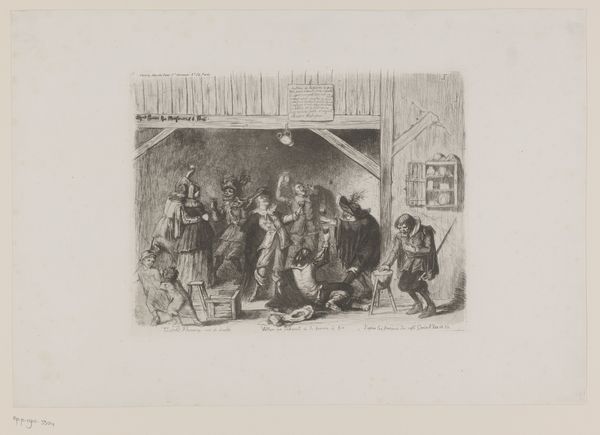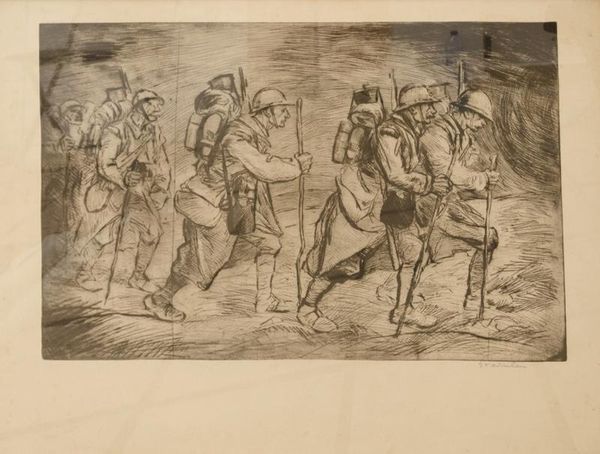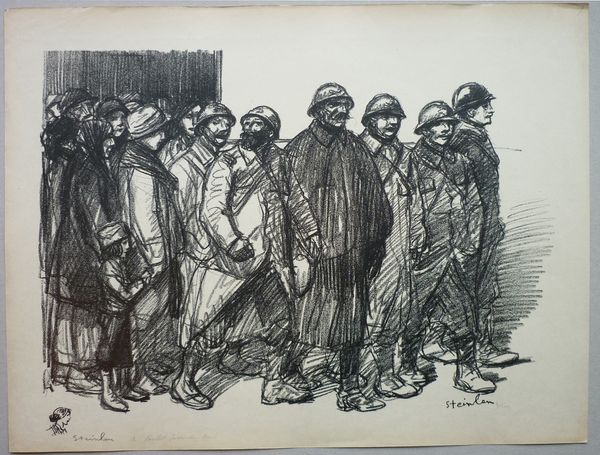
print, etching
#
portrait
# print
#
etching
#
portrait reference
#
expressionism
#
limited contrast and shading
#
portrait drawing
#
history-painting
#
realism
Copyright: Public domain
Editor: Here we have Théophile Alexandre Steinlen's 1916 etching, "Permissionaires No-2." It seems to depict soldiers during wartime. The scene feels quite somber, doesn't it? What do you see in this piece, considering the historical context? Curator: It’s a compelling snapshot of World War I, captured in print. Steinlen, known for his social commentary, likely intended to portray the common soldier's experience. Considering the sociopolitical climate of 1916, where war fatigue was growing, this image serves as more than just a record. It offers insight into the public perception of the conflict. Notice the soldiers' weary postures and the etching's somewhat grim atmosphere; how might that have resonated with the French public at the time? Editor: It's striking how the weariness translates. Did Steinlen have a particular message or agenda with this piece, or was it primarily a work of observation? Curator: That’s a crucial question. Steinlen had socialist leanings. His earlier work often critiqued societal injustices, particularly the plight of the working class. Here, the art becomes intertwined with public discourse on war. Is it glorifying war or showing its impact? The way Steinlen depicts the soldiers – their anonymity, their burdened forms – leans more toward a critique of war's human cost. Editor: So, it’s not just about the individual soldiers but more a comment on the war itself and its effect on society. Curator: Exactly. Think of how this etching, made for mass production as a print, would circulate within society. Its impact comes from the ability to shape public opinion about the ongoing conflict and those embroiled in it. Editor: This gives me a fresh outlook. I initially saw it as a simple depiction, but now I see its much deeper political significance. Curator: And that’s how art engages with society – sparking critical conversations about who we are, our values, and the forces shaping our lives.
Comments
No comments
Be the first to comment and join the conversation on the ultimate creative platform.
